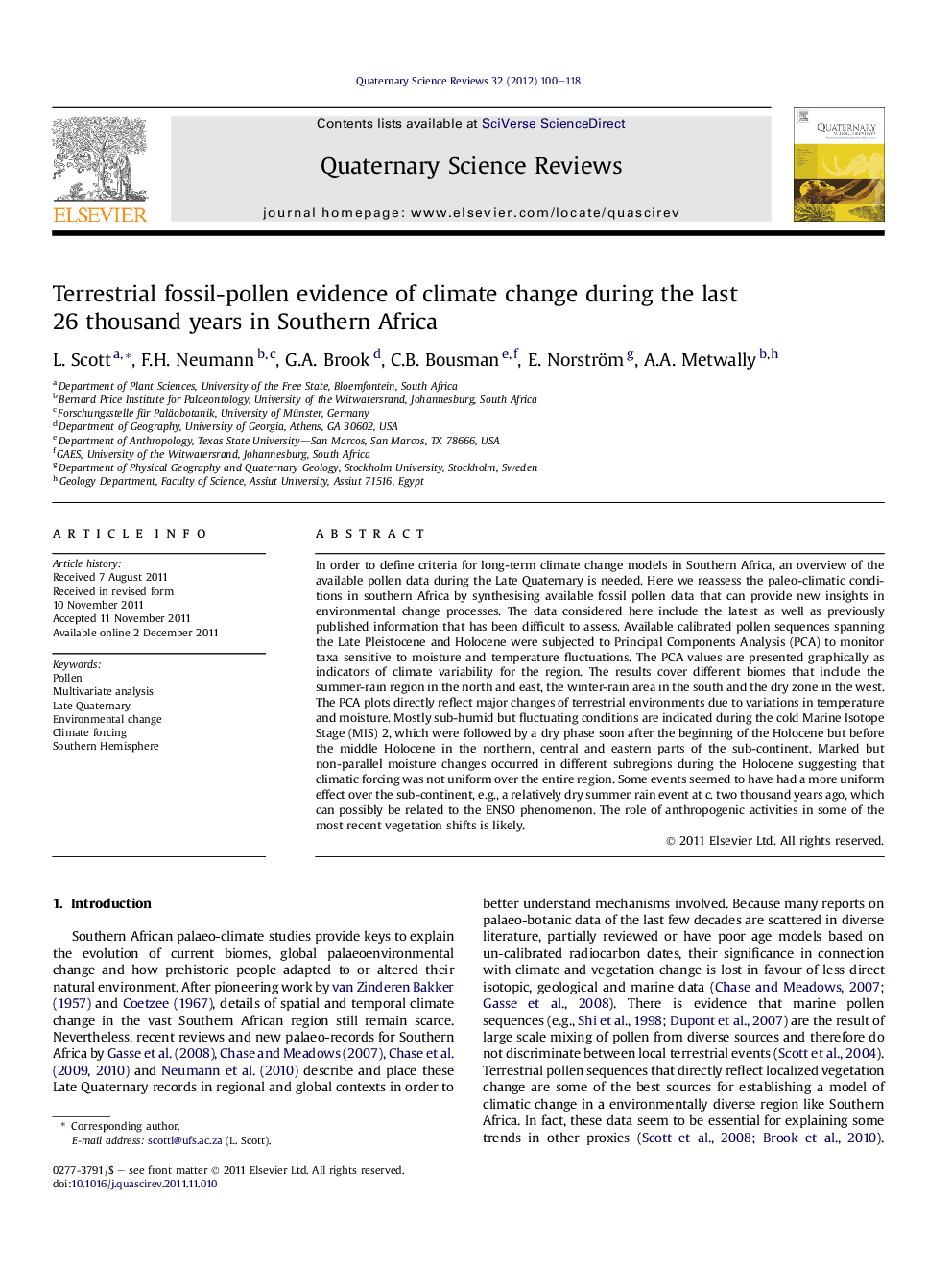| Article ID | Journal | Published Year | Pages | File Type |
|---|---|---|---|---|
| 4737613 | Quaternary Science Reviews | 2012 | 19 Pages |
In order to define criteria for long-term climate change models in Southern Africa, an overview of the available pollen data during the Late Quaternary is needed. Here we reassess the paleo-climatic conditions in southern Africa by synthesising available fossil pollen data that can provide new insights in environmental change processes. The data considered here include the latest as well as previously published information that has been difficult to assess. Available calibrated pollen sequences spanning the Late Pleistocene and Holocene were subjected to Principal Components Analysis (PCA) to monitor taxa sensitive to moisture and temperature fluctuations. The PCA values are presented graphically as indicators of climate variability for the region. The results cover different biomes that include the summer-rain region in the north and east, the winter-rain area in the south and the dry zone in the west. The PCA plots directly reflect major changes of terrestrial environments due to variations in temperature and moisture. Mostly sub-humid but fluctuating conditions are indicated during the cold Marine Isotope Stage (MIS) 2, which were followed by a dry phase soon after the beginning of the Holocene but before the middle Holocene in the northern, central and eastern parts of the sub-continent. Marked but non-parallel moisture changes occurred in different subregions during the Holocene suggesting that climatic forcing was not uniform over the entire region. Some events seemed to have had a more uniform effect over the sub-continent, e.g., a relatively dry summer rain event at c. two thousand years ago, which can possibly be related to the ENSO phenomenon. The role of anthropogenic activities in some of the most recent vegetation shifts is likely.
► Review of Late Quaternary Southern African pollen data published between 1967 and 2011. ► Climate change at different sites compared by curves derived from fossil pollen data. ► Southern Hemisphere changes coeval with LGM, the Younger Dryas and early and late Holocene. ► Clues for the underlying mechanisms of climate change in South Africa revealed. ► Indications of anthropogenic influence on vegetation in South Africa since 2 ka.
